When I set out to write this blog, my first thoughts reminded me of Kohnke et al.’s (2023) stance in his review article on ChatGPT, that the AI tool “supports language learning by simulating authentic interactions”, and Bates (2015) reminder to humanity about how resistance to new things/ideas is a common initial reaction before eventual acceptance and integration occurs.
So, I wanted to share these two examples of how I utilize this widely debated AI tool to enhance my ESL teaching practices and navigate them more effectively.
Example 1: When you have a morning class that starts early, there are occasions when you need to consume a couple of cups of coffee to feel fully awake and alert. However, in the absence of coffee, one might find themselves turning to ChatGPT for assistance, which is precisely what I did this morning when I needed to create a cloze exercise for the vocabulary my students had learned in a class the day before.
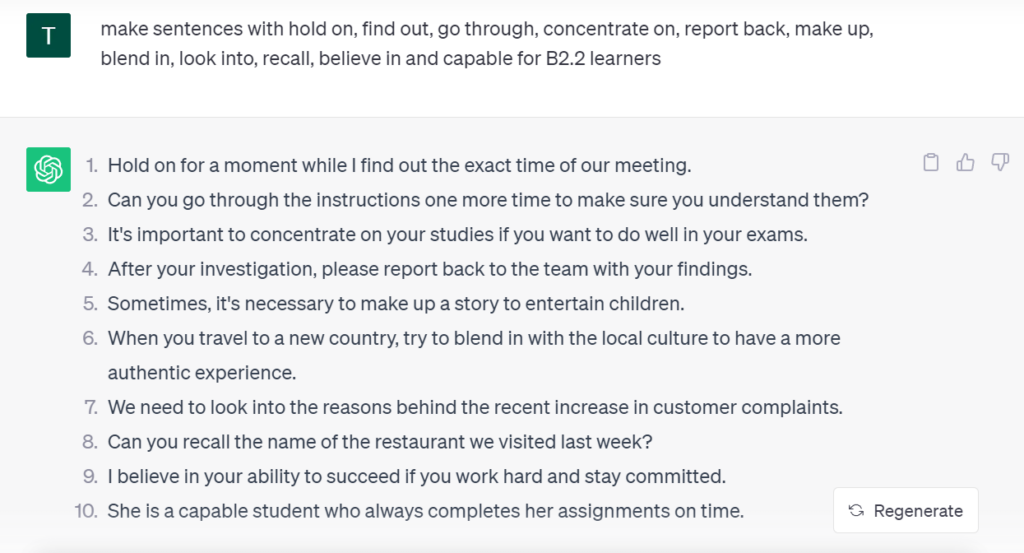
Example 2: The prompt given to AI was used for a Debates and Discussions SPIN class at my ESL school, where my motive was to encourage them to work on their communication skills and especially their confidence:
https://chat.openai.com/share/78727ee6-9187-4469-9766-3894aa8c5eb2
Nevertheless, this represents my endeavor to connect with the community of educators and potentially provoke responses from them regarding their perspectives on:
- I wonder what my fellow teachers think about using this tool to create resources or to supplement their regular teaching-learning discourse?
- What ethical considerations should be taken into account when integrating AI into ESL teaching, especially in terms of data privacy and student interactions?
- How do AI-driven assessments and feedback mechanisms work for you to have more efficient and effective ESL language evaluations?
- In what ways can AI tools help ESL teachers in individualizing instruction for diverse learners with varying language proficiency levels?
- What strategies can ESL educators employ to strike a balance between AI-driven language support and the human touch in their teaching methods?
References
Bates, A. W. (2015). Teaching in a digital age: Guidelines for designing teaching and learning. BCcampus.
Kohnke, L., Moorhouse, B. L., & Zou, D. (2023). ChatGPT for Language Teaching and Learning. RELC Journal, 0(0).
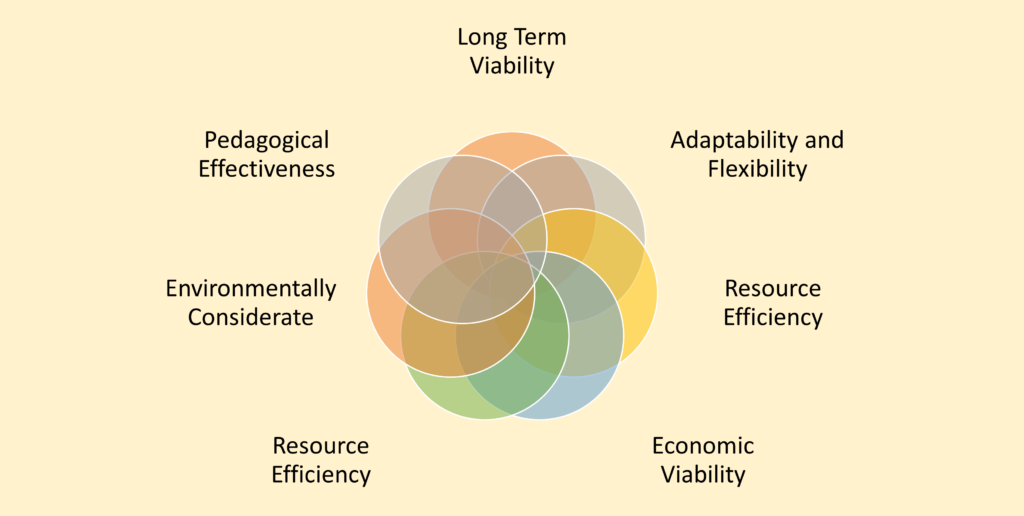
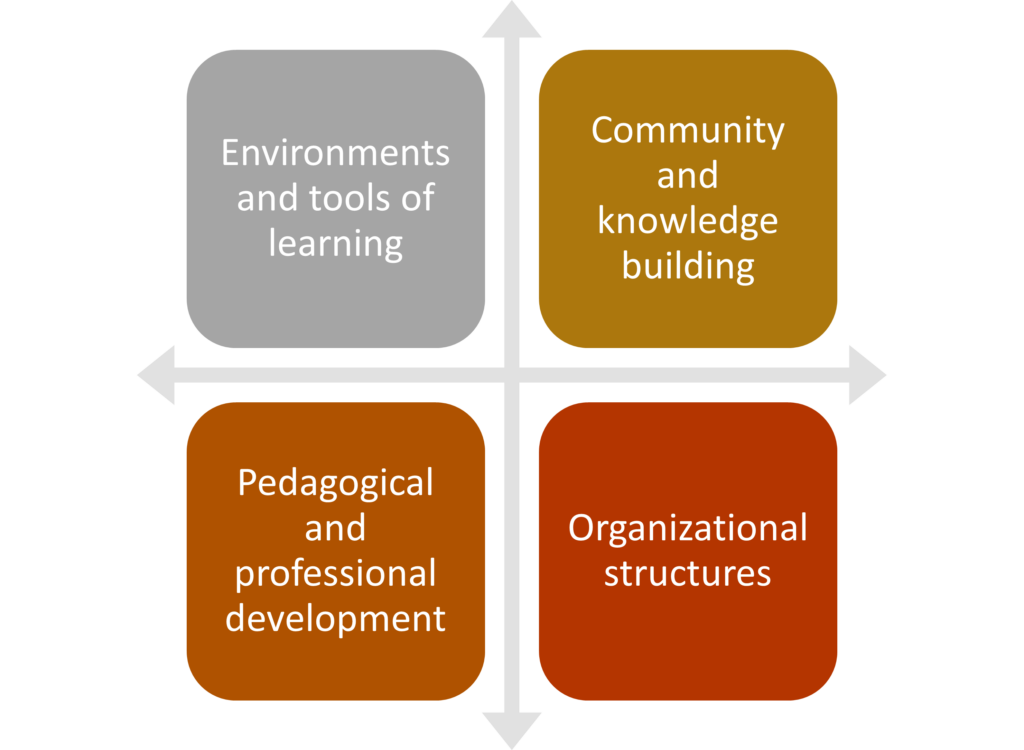
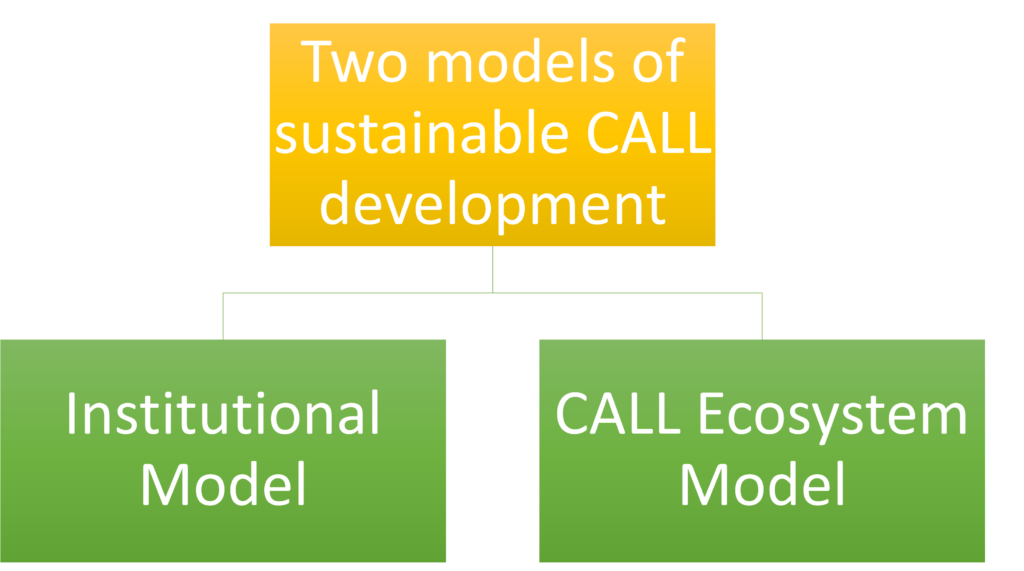
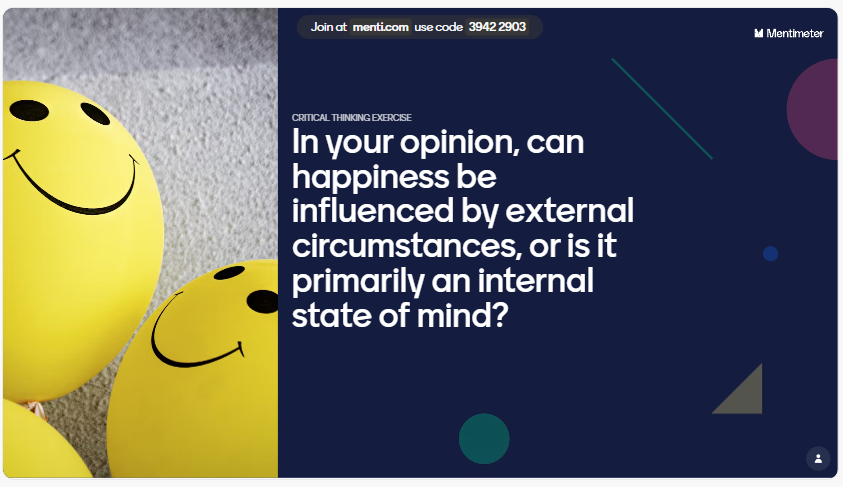
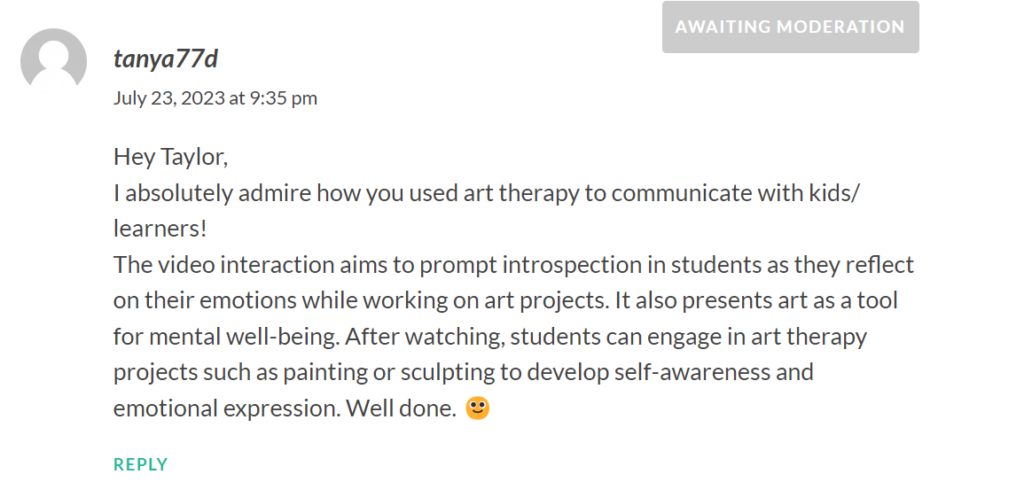
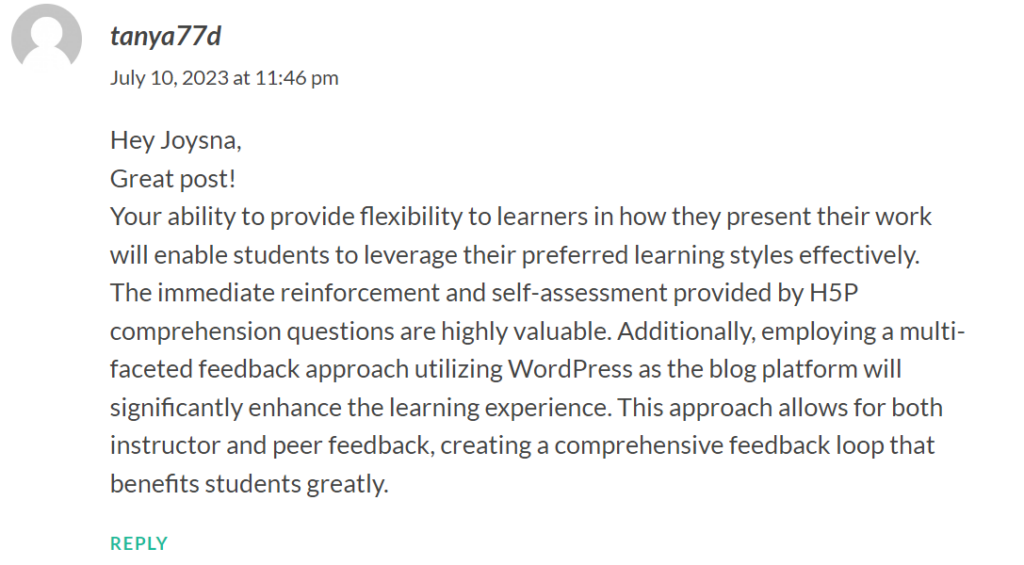
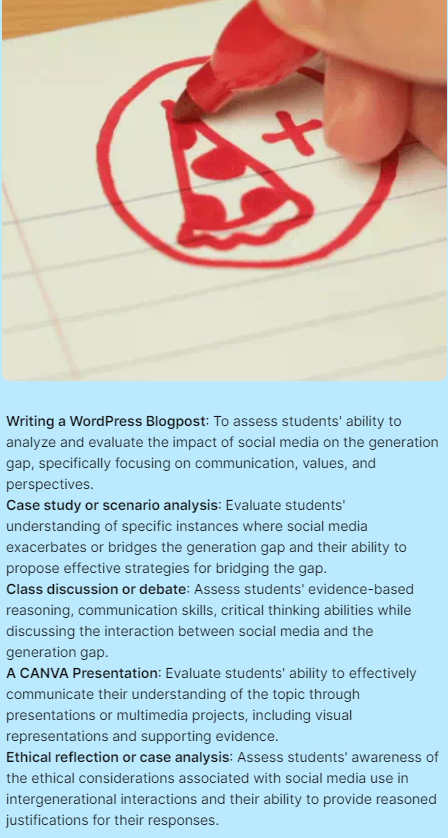
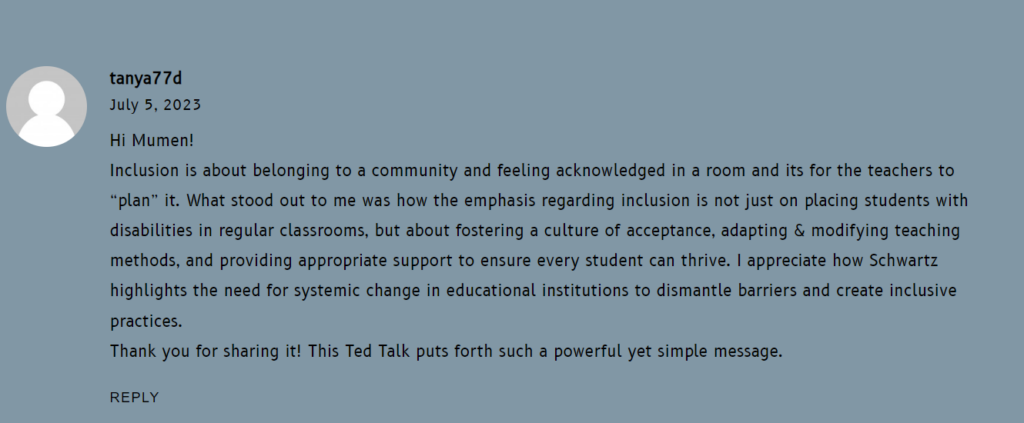
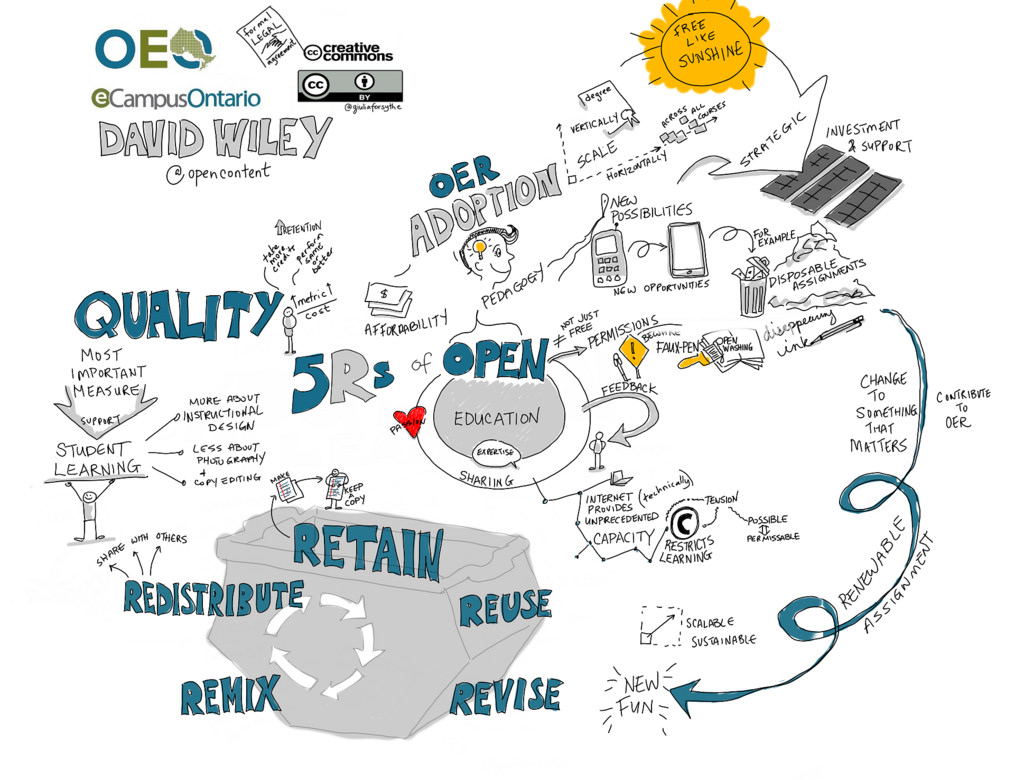
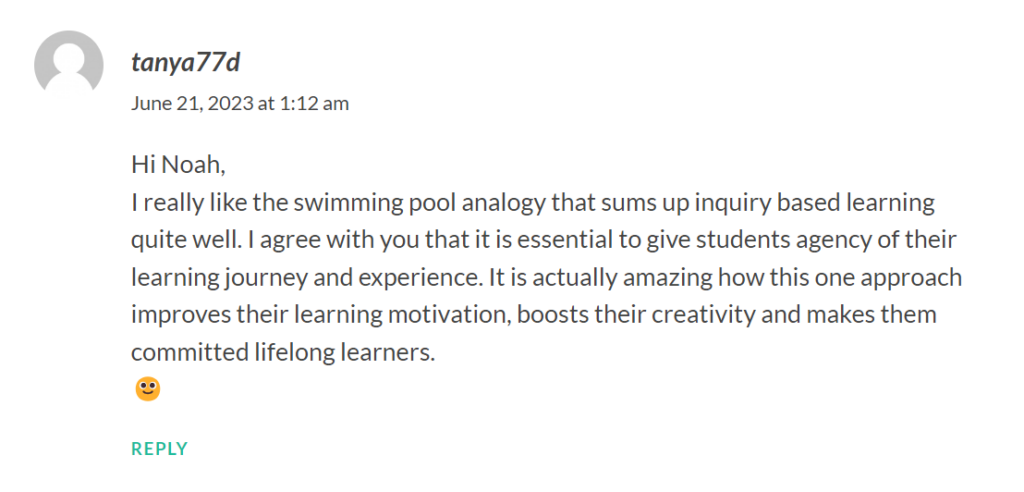
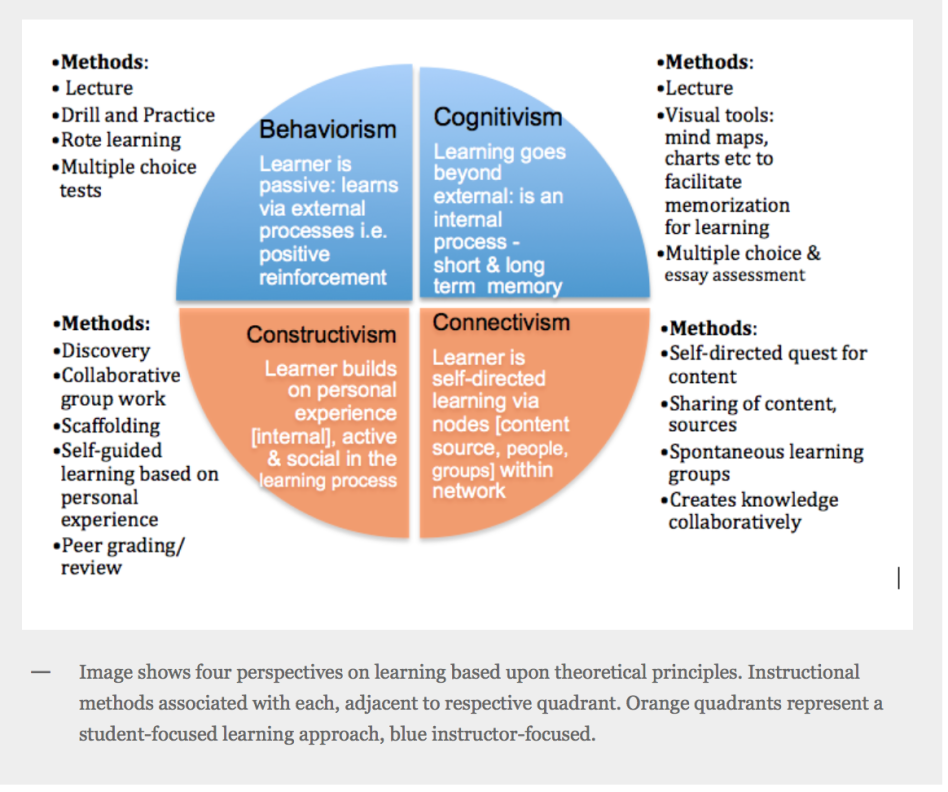
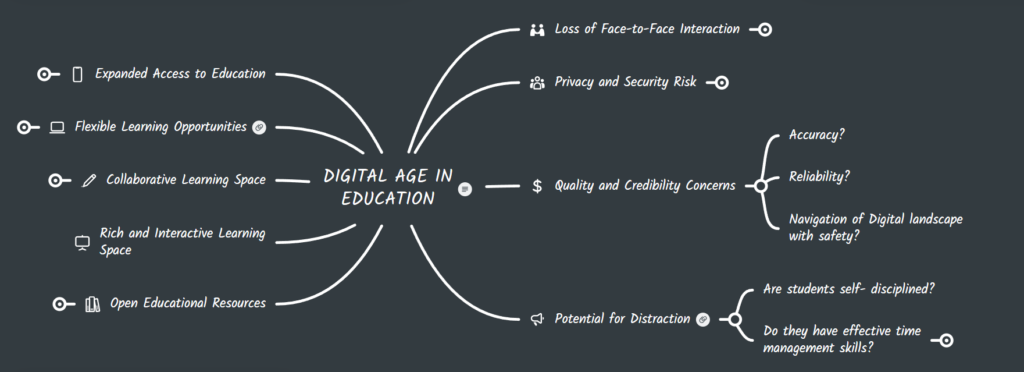
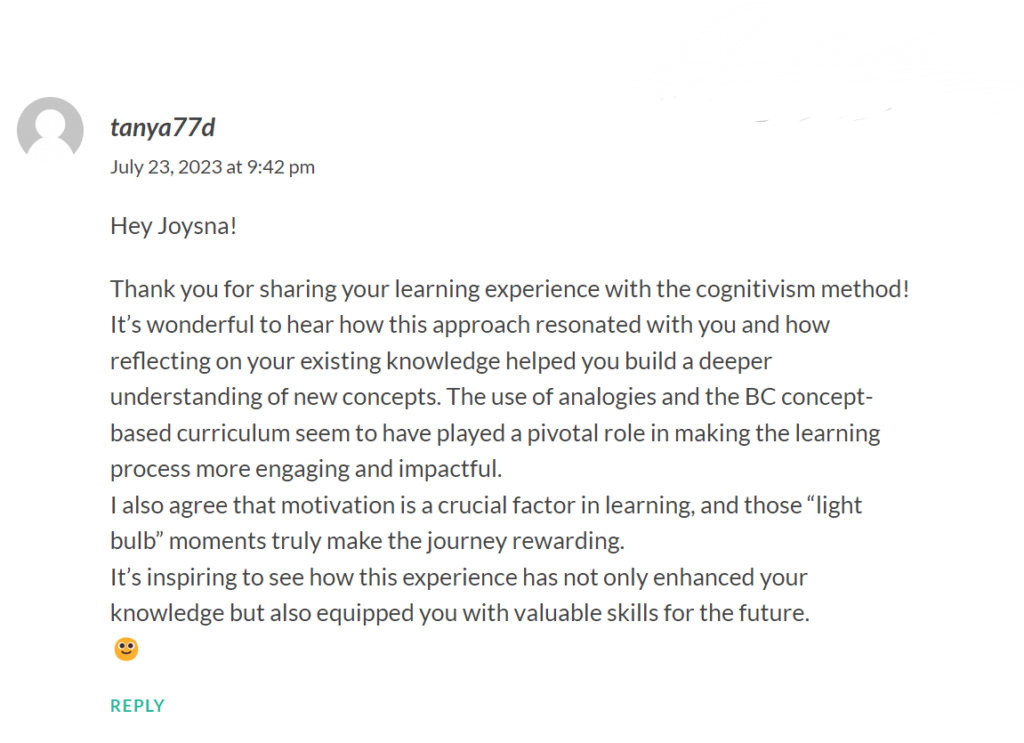
Hello Tanya, Thank you for sharing your experience about how you had to modify your plan, changing in from a…
Hello Tanya, Thank you for sharing your different learning experiences. I can relate to the sentence you wrote whereby the…
Hi Tanya! Thanks for sharing that fantastic video. It was really deep, and I enjoyed watching it. What I loved…
Hey Noah, Thank you for your comment! I often times rely on digital pedagogy in my ESL classroom. I can…
Hi Tanya, I love the activities that you provided to go along with your video, very creative! I think that…